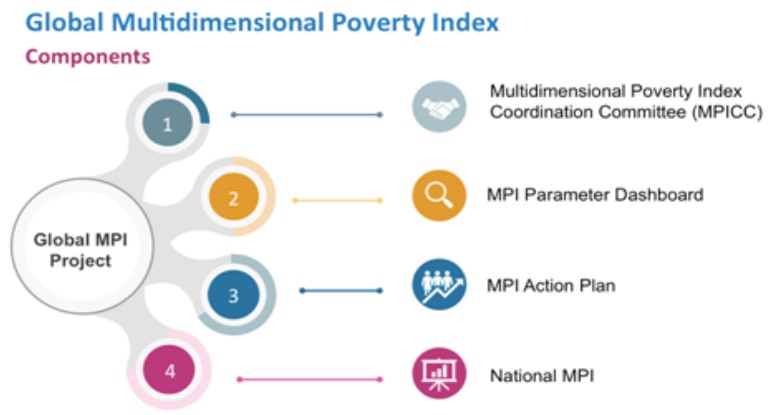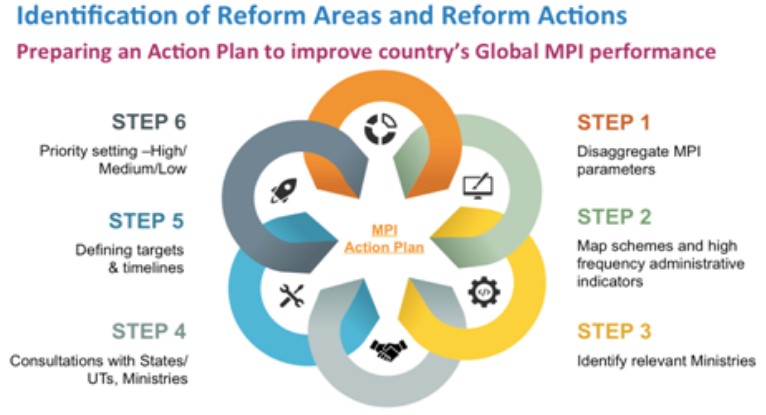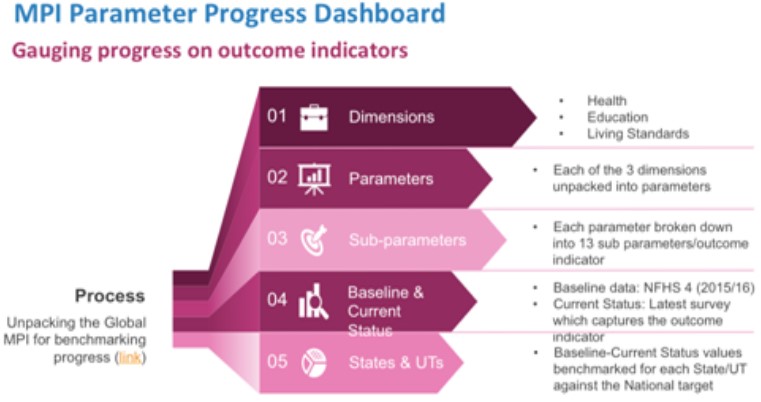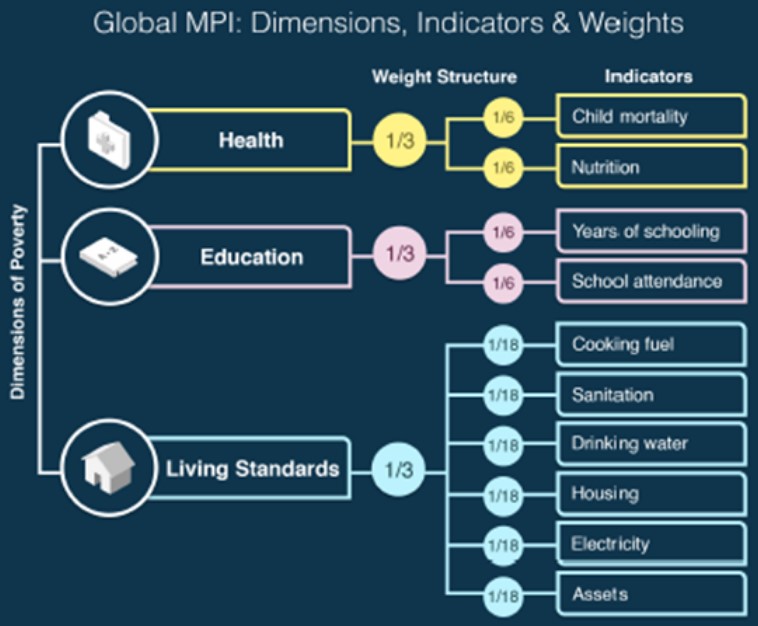Contents
- Hypersonic Technology Demonstrator Vehicle (HSTDV)
- Global Multidimensional Poverty Index (MPI)
- First World Solar Technology Summit
- Content Regulation in Government Advertising (CCRGA)
HYPERSONIC TECHNOLOGY DEMONSTRATOR VEHICLE (HSTDV)
Focus: GS-III Science and Technology, Prelims
Why in news?
Defence Research and Development Organisation (DRDO) has successfully demonstrated the hypersonic air-breathing scramjet technology with the flight test of Hypersonic Technology Demonstration Vehicle (HSTDV).
India is pushing ahead with the development of ground and flight test hardware as part of an ambitious plan for a hypersonic cruise missile.
Details
- The hypersonic cruise vehicle was launched using a proven solid rocket motor, which took it to an altitude of 30 kilometres (km), where the aerodynamic heat shields were separated at hypersonic Mach number.
- The hypersonic combustion sustained and the cruise vehicle continued on its desired flight path at a velocity of six times the speed of sound i.e., nearly 02 km/second for more than 20 seconds.
- With this successful demonstration, many critical technologies such as aerodynamic configuration for hypersonic manoeuvres, use of scramjet propulsion for ignition and sustained combustion at hypersonic flow, thermo-structural characterisation of high temperature materials, separation mechanism at hypersonic velocities etc., were proven.
- Israel has provided some assistance on the HSTDV program, including wind tunnel testing, as has Cranfield University of the U.K. An unnamed third country is helping as well.
Hypersonic Technology Demonstrator Vehicle (HSTDV)
- The HSTDV is an unmanned scramjet demonstration aircraft for hypersonic speed flight.
- It is being developed as a carrier vehicle for hypersonic and long-range cruise missiles, and will have multiple civilian applications including the launching of small satellites at low cost.
- The HSTDV program is run by the Indian Defence Research and Development Organisation.
Defence Research and Development Organisation (DRDO)
- The Defence Research and Development Organisation (DRDO) is an agency of the Government of India, charged with the military’s research and development.
- It is headquartered in Delhi, India and has its 50+ labs all across the country.
- It was formed in 1958.
- It is under the administrative control of the Ministry of Defence, Government of India.
- With a network of 52 laboratories, which are engaged in developing defence technologies covering various fields, like aeronautics, armaments, electronics, land combat engineering, life sciences, materials, missiles, and naval systems, DRDO is India’s largest and most diverse research organisation.
Objectives of DRDO
- Design, develop and lead to production state-of-the-art sensors, weapon systems, platforms and allied equipment for our Defence Services.
- Provide technological solutions to the Services to optimise combat effectiveness and to promote well-being of the troops.
- Develop infrastructure and committed quality manpower and build strong indigenous technology base.
GLOBAL MULTIDIMENSIONAL POVERTY INDEX (MPI)
Focus: GS-II Social Justice
Introduction: NITI Aayog and Global MPI (GIRG)
- NITI Aayog as the nodal agency has been assigned the responsibility of leveraging the monitoring mechanism of the Global Multidimensional Poverty Index (MPI) to drive reforms.
- NITI Aayog has also constituted a Multidimensional Poverty Index Coordination Committee (MPICC).
- Global MPI is part of Government of India’s decision to monitor the performance of the country in 29 select Global Indices.
- The objective of the “Global Indices to Drive Reforms and Growth (GIRG)” exercise is to fulfil the need to measure and monitor India’s performance on various important social and economic parameters and enable the utilisation of these Indices as tools for self-improvement, bring about reforms in policies, while improving last-mile implementation of government schemes.



Multidimensional Poverty Index (MPI)
- Multidimensional Poverty Indices use a range of indicators to calculate a summary poverty figure for a given population, in which a larger figure indicates a higher level of poverty.
- This figure considers both the proportion of the population that is deemed poor, and the ‘breadth’ of poverty experienced by these ‘poor’ households, following the Alkire & Foster ‘counting method’.
Positives and Criticism
- MPI advocates state that the method can be used to create a comprehensive picture of people living in poverty, and permits comparisons both across countries, regions and the world and within countries by ethnic group, urban/rural location, as well as other key household and community characteristics.
- MPIs are useful as an analytical tool to identify the most vulnerable people – the poorest among the poor, revealing poverty patterns within countries and over time, enabling policy makers to target resources and design policies more effectively.
- Critics of this methodology have pointed out that changes to cut-offs and thresholds, as well as the indicators included and weightings attributed to them can change MPI scores and the resulting poverty evaluation.
Global Multidimensional Poverty Index (MPI)
- The Global Multidimensional Poverty Index (MPI) was developed in 2010 by the Oxford Poverty & Human Development Initiative (OPHI) and the United Nations Development Programme and uses health, education and standard of living indicators to determine the incidence and intensity of poverty experienced by a population.
- The Global MPI is released Annually by UNDP and OPHI and the results published in their websites.
- The index is released at the High-Level Political Forum (HLPF) on Sustainable Development of the United Nations in July every year.
Parameters
Global MPI is computed by assigning scores for each surveyed household on 10 parameters.
- Nutrition,
- Child mortality,
- Years of schooling,
- School attendance,
- Cooking fuel,
- Sanitation,
- Drinking water,
- Electricity,
- Housing,
- Household assets.

The Alkire-Foster ‘counting method’
The Alkire-Foster (AF) method is a way of measuring multidimensional poverty developed by OPHI, which involves counting the different types of deprivation that individuals experience at the same time, such as a lack of education or employment, or poor health or living standards.
FIRST WORLD SOLAR TECHNOLOGY SUMMIT
Focus: GS-II Environment and Ecology
Why in news?
- The first World Solar Technology Summit (WSTS) is organized by the International Solar Alliance (ISA) and is expected to bring the spotlight on accelerating affordable and sustainable clean green energy by showcasing and deliberating on innovative state of the art next generation technologies in solar power.
- The Global CEO’s session which follows the inaugural will see a moderated discussion between the CEOs of the world’s largest corporations that contribute greatly towards the promotion of solar energy integration with other renewables and storage for sustainable energy solutions.
Details
- The inaugural will witness the rolling of an action- packed agenda with the conclusion and announcement of three agreements between ISA and International Institute of Refrigeration, a second with Global Green Growth Institute and a third agreement with National Thermal Power Corporation.
- A tripartite agreement between India’s Ministry of New and Renewable Energy, the World Bank and the International Solar Alliance is also set to be inked.
- ISA’s technology journal, Solar Compass 360 will also be launched during the summit.
CONTENT REGULATION IN GOVERNMENT ADVERTISING (CCRGA)
Focus: GS-II Governance
Why in news?
The 19th meeting of Supreme Court -mandated Committed on Content Regulation in Government Advertising (CCRGA) was held virtually.
Highlights
- Karnataka, Goa, Mizoram and Nagaland States have already constituted state-level Three Member Committees.
- The State Government of Chhattisgarh has given its consent to the Central Committee to monitor the content of their government advertisements.
- The CCRGA meeting took a serious note of the fact that other states have yet to constitute their respective state level Committees.
- The CCRGA was of the view that some state governments’ delay in setting up the state-level committees may be construed as contempt of Hon’ble Supreme Court’s order.
Content Regulation in Government Advertising (CCRGA)
- As per the directions of Supreme Court in 2015, the Government of India had set up a three-member body in 2016 to look into content regulation of government funded advertisements in all media platforms.
- It is empowered to address complaints from the general public and can also take suo-moto cognizance of any violation of the Supreme Court guidelines and recommend corrective actions.
- The content of government advertisements should be relevant to the government’s constitutional and legal obligations as well as the citizen’s rights and entitlements.
- The advertisement materials should be designed to meet the objectives of the campaign and to ensure maximum reach in a cost-effective way.
- It should be accurate and not presenting pre-existing policies and products as new. The advertisement content should also not promote the political interests of the ruling party.



